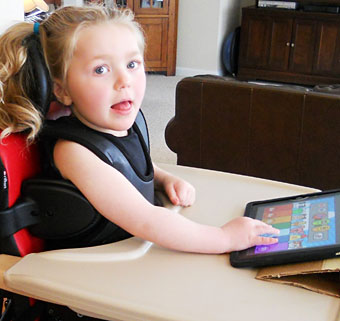 We know that there are over fifteen body functions and body structures affected by the orientation of an adaptive seating system. So needless to say, when setting up such a seating system for a child with disabilities, it’s important to get it right. That task falls on the child’s therapist or ATP. Successful positioning and functional results depends on thoroughly understanding the characteristics of all seating products. Things like axis placement for best clearance of the knees under a table, or the degree of tilt for best pressure relief, forward reach and interaction with the environment.
We know that there are over fifteen body functions and body structures affected by the orientation of an adaptive seating system. So needless to say, when setting up such a seating system for a child with disabilities, it’s important to get it right. That task falls on the child’s therapist or ATP. Successful positioning and functional results depends on thoroughly understanding the characteristics of all seating products. Things like axis placement for best clearance of the knees under a table, or the degree of tilt for best pressure relief, forward reach and interaction with the environment.
Great Positioning Resource
I recently stumbled on an excellent webinar and from it learned some fantastic evidence-based information on this subject. I highly recommend it. The webinar, Tilt and Recline in Pediatric Mobility, is free, made available by Mobility Management and the sponsorship of Convaid whose products (along with those of R82) help to illustrate the finer details of the presentation. And wow—the content is great!
Clinical Pearls
Here are a few outstanding details: a child with tonic labyrinthine reflex (TLR—the one where if the head goes backwards the extremities extend) who needs to be reclined will do best with using tilt-in-space over recline. Reclining the back and opening the seat-to-back angle triggers the reflex whereas keeping the seat-to-back angle constant as in tilt-in-space achieves the desired result without eliciting the reflex.
Or how about this one: skin damage does not so much depend on the magnitude and duration of the load (tissue damage will only occur after 22 hours) but on shear force present. If you have shear forces present, the amount of load needed to trigger tissue damage is cut in half and damage begins within 10 minutes. I learned that chairs with a fulcrum near the anatomical hip axis work best for preventing these shear forces when moving in and out of recline.
And there’s more. Watch this one and it will be an hour well spent.
(You will have to register, but it takes only a minute).
Back to Top